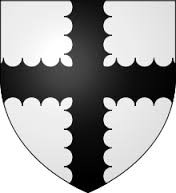Written by:
The Rt. Hon. Malcolm Ian Sinclair P.C.
"Wine is strong, a king is stronger, women are stronger still, but truth conquers all"
Inscription in Rosslyn Chapel built by William Sinclair, Earl of Caithness, mid 1400s
Clan Information
Origins of the Family
The family probably originated from France and settled in Scotland in the 1100s. The first charter of land to a Sinclair in Scotland was in 1162 from Henry de St Clair for the lands at Herdmanston, about fifteen miles east of Edinburgh. The Sinclairs soon increased in numbers, wealth and importance in the south of Scotland. In the mid 1300s there was a dynastic marriage between Henry Sinclair of Roslin and Isabella, who became the last surviving heiress of the Norse line of Jarls of Orkney and Caithness, who trace their ancestry back to Rognvald of Moeri (in Norway) ‘the Mighty’ 1st Jarl of Orkney in about 870. The power, influence and land holdings throughout Scotland increased dramatically as the family now served two kings – those of Scotland and Norway for about one hundred years.
Profile of the Clan Today
There are Sinclairs in many parts of the world and the first clan association was formed in Canada in 1972. There are now associations in Australia, Italy, Romania, Scotland and USA. Since 2000 there have been regular International Gatherings involving Sinclairs from these countries as well as France, Northern Ireland, New Zealand, Norway and South Africa.
Chief of the Clan
Malcolm Ian Sinclair, The Rt. Hon. The Earl of Caithness P.C. (20th Earl of Caithness Lord Berriedale and 15th Baronet of Nova Scotia. Hereditary Chief).
Armorials of the Chief
Undifferentiated Coat of Arms

A cross engrailed Argent and Sable (Silver/White and Black) first used as a seal by Sir William Sinclair of Roslin in 1292. Now in common use by many Sinclairs.
There are several Sinclair tartans. As of June 2017, there are eight registered with the Scottish Register of Tartans but there are also a few others that are not registered and appear below.
Septs of the Clan
There is no definitive list of Septs for any clan/family. The chief could choose who would be a member of his clan. Historically many of the sept families would have followed the local chief and thus formed a dependency on him.
Families associated with Clan Sinclair include, amongst others, Budge, Caird, Clouston, Clyne, Flett, Gallie, Linklater, Lyall, Mason, Moar, Peace, Purdie, Snoddy.
Associated Sinclair families in Caithness [3]: of Achingale and Newton; Assary; Barrock; Borlum and Thura, Toftkemp; Brabsterdorran; Brabstermyre; Bridgend; Broynach and Sarclet; Dun; Dunbeath and Latheron; Durran; Forss; Freswick; Geise; Greenland and Rattar; Hoy and Oldfield; Keiss; Kirk and Myrelandhorn; Latheron; Lybster; Lybster, Reay; Mey; Murkle: Olrig; Risgill; Scotscalder; Stemster and Dunbeath; Southdun; Stirkoke; Ulbster;
Associated Sinclair families in Orkney [3]: of Campston; Clumlie; Craya; Damsay and Comyar. Essenquoy; Estaquoy; Ethay; Flottav and Gyre; Gorne and Burwick; Greenwell; Hammer; Overbrugh; Rapness; Nethergarth; Tohop and Saba; Towquoy; Warsetter;
Associated Sinclair families in Shetland [3]; Aith and Scalloway; Bullister and Swining; Goat; Havera and Brew; Houss, Quendale; Sandwick and Mousa; Strom and Brugh; Toft;
Associated Sinclair families in Southern Scotland [1]:. Herdmanston; Roslin; Lonformacus; Stevenson; Pitcairn and Whitekirk; Dryden; Spottis and Woodhouselee; Pennycuick; Balgreggie and Saintclearholme.
Associated Sinclair families in West Scotland [1]; Argyllshire; Tiree and Islay.
Sinclairs in Ireland [1]; Holyhill; Belfast; Ballymena and Vestiges.
Sinclairs in England [2]; Colchester; Aeslingham; Bradfield; Aldham; Igtham; Burstow; Somerset; Devonshire; and Staverton Court.
[1] The Enigmatic Sinclairs – a definitive guide to the Sinclairs in Scotland by Gerald Sinclair and Rondo BB Me 2015
[2] Matriculated by The Lord Lyon and in Public Register of All Arms and Bearings in Scotland.
[3] The St. Clairs of the Isles by Roland William Saint Clair published 1898 and Caithness Family History by John Henderson 1884.
/END\